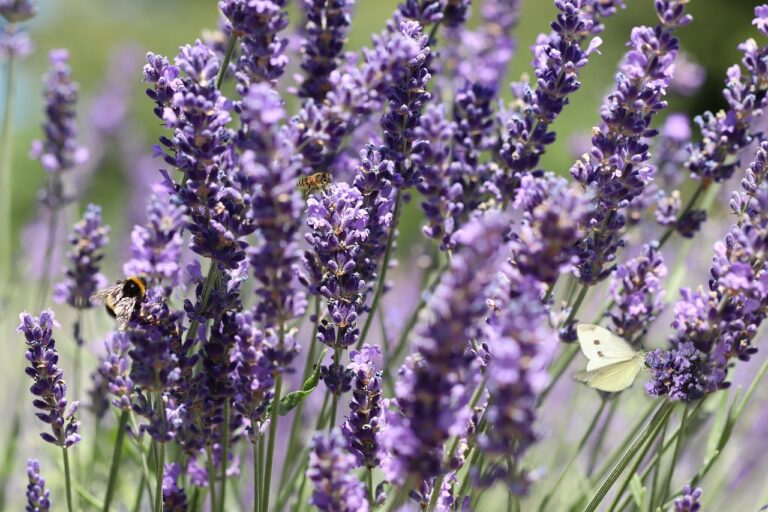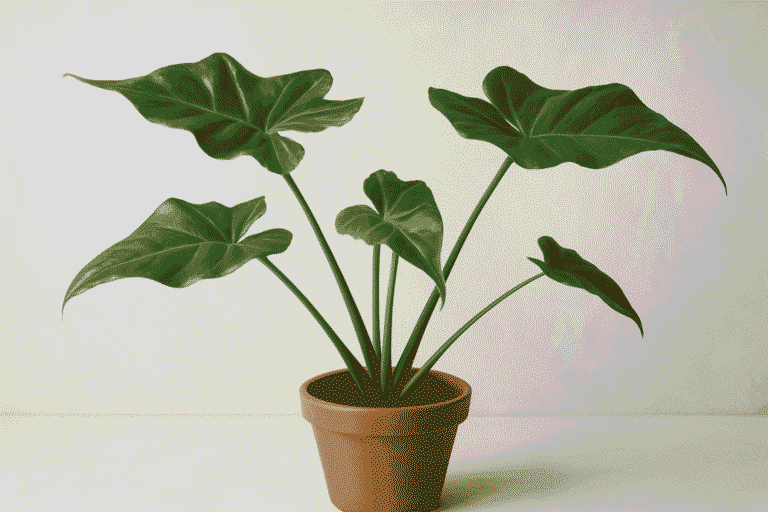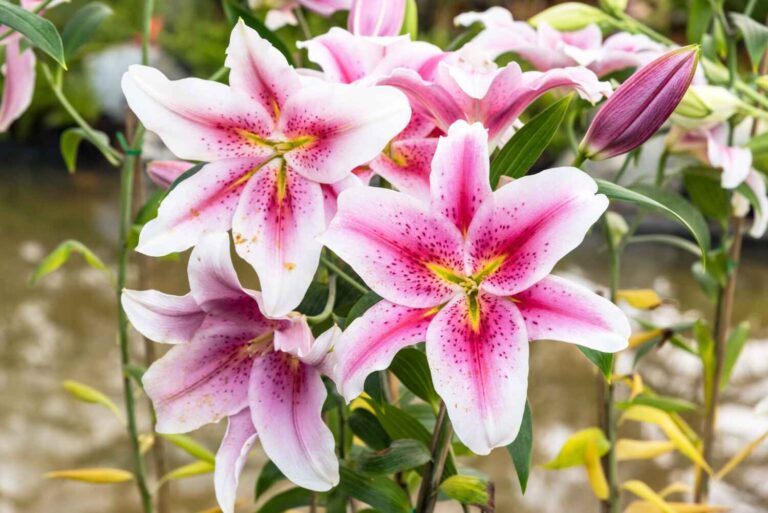How to Grow and Care for Celosia Plants?
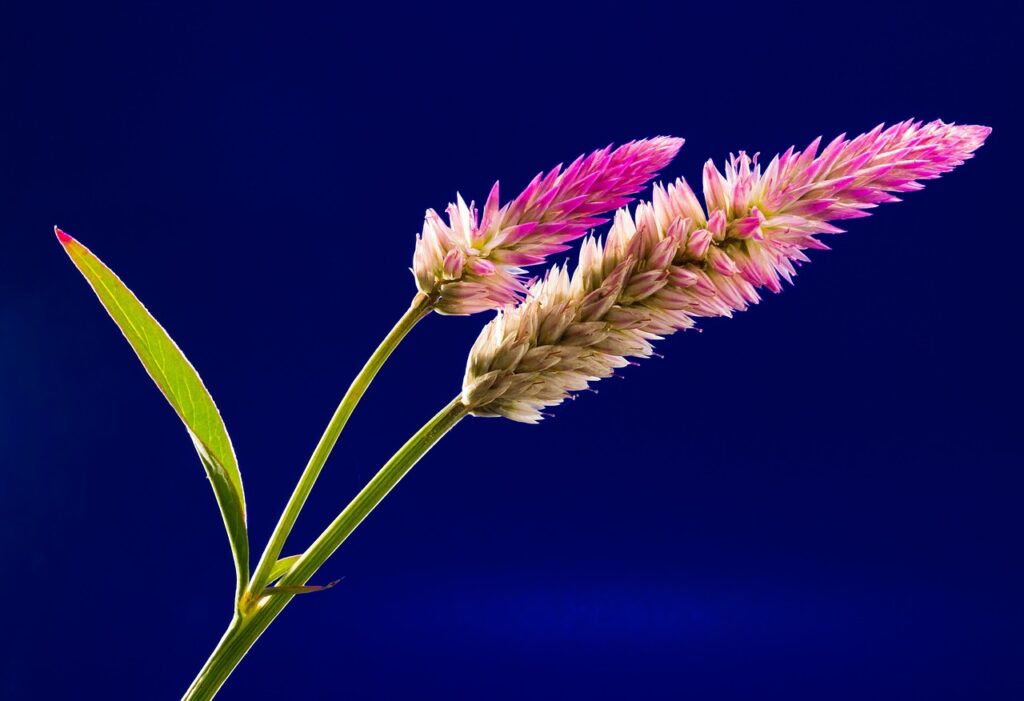
Celosia plants are a great choice if you want to add bright colors to your garden. Their unique flowers come in different shapes, like feathery plumes or wavy crests, and they bloom from summer to fall. Whether you grow them in flower beds, pots, or even as cut flowers for your home, they are sure to stand out.
The good news is that it is easy to grow! These plants love warm weather and don’t need much care once they start growing. As long as they get plenty of sunlight, well-draining soil, and the right amount of water, they will thrive.
Taking care of this flower is simple. Water them regularly, feed them with fertilizer now and then, and remove old flowers to keep them blooming. They are also quite tough, so you won’t have to worry too much about pests or diseases.
In this guide, we’ll go over everything you need to know about growing and caring for Celosia. Whether you’re planting from seeds or starting with young plants, these tips will help you grow healthy, beautiful flowers that brighten up your space.
Types of Celosia: Choosing the Right Variety
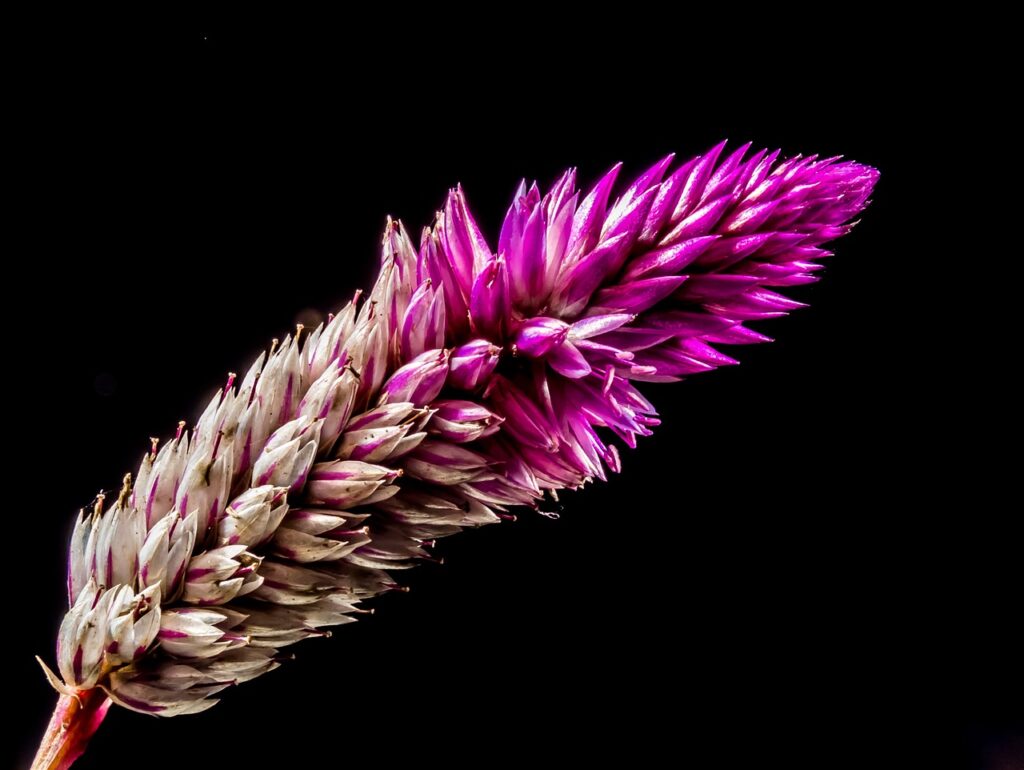
Celosia comes in different shapes, sizes, and colors, making it easy to find the perfect variety for your garden. There are three main types of Celosia: plume (Celosia argentea var. plumosa), cockscomb (Celosia cristata), and wheat (Celosia spicata). Each type has its own unique look and growing needs.
Plume Celosia has soft, feathery flowers that look like flames. These plants grow upright and are perfect for adding height and color to flower beds and containers. They come in bright shades of red, orange, yellow, and pink.
Cockscomb Celosia has unusual, brain-like flowers with a velvety texture. These bold blooms stand out in any garden and are often used in floral arrangements. They can be short or tall, depending on the variety.
Wheat Celosia has slender, spike-shaped flowers that resemble wheat stalks. This type is great for a more natural, wildflower-style garden and is popular for dried flower arrangements.
When choosing a Celosia variety, consider your garden space, color preference, and how you want to use the flowers. No matter which type you pick, Celosia will bring long-lasting beauty to your garden with very little effort!
Watering and Feeding Celosia for Healthy Growth
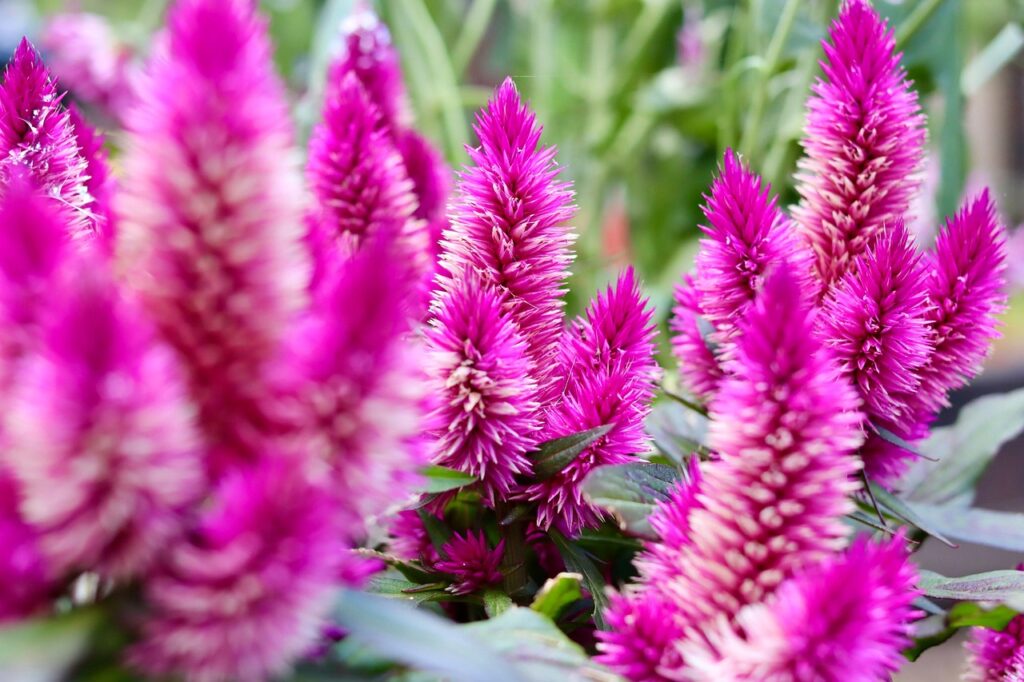
Giving this flower the right amount of water and nutrients is key to keeping it healthy and full of blooms. These plants love warm weather but need proper care to thrive.
Watering Celosia requires balance. While it enjoys moist soil, it doesn’t like sitting in water. Overwatering can lead to root rot, so it’s best to water when the top inch of soil feels dry. In hot weather, you may need to water more often, especially if the plants are in pots. Always water at the base of the plant to keep the leaves and flowers dry, which helps prevent diseases.
Feeding Celosia with fertilizer helps it grow strong and produce more flowers. Use a balanced liquid fertilizer every two to three weeks or a slow-release fertilizer at the start of the growing season. If you want even brighter blooms, choose a fertilizer that’s higher in phosphorus. Avoid too much nitrogen, as it can cause excess leaves instead of flowers.
With the right watering and feeding routine, your flower will stay healthy and colorful all season long. A little care goes a long way in making these beautiful flowers thrive!
Best Watering Techniques to Avoid Root Rot
Proper watering is essential for healthy Celosia plants, and using the right techniques can prevent root rot. Too much water can drown the roots, while too little can cause the plant to wilt. Here’s how to water your Celosia the right way.
- Check the Soil First
Before watering, feel the soil with your fingers. If the top inch is dry, it’s time to water. If it still feels damp, wait a little longer. This simple step helps prevent overwatering. - Water at the Base
Always water at the base of the plant instead of from above. This keeps the leaves and flowers dry, reducing the risk of fungal diseases. Use a watering can or hose with a gentle flow to avoid disturbing the soil. - Use Well-Draining Soil
Good drainage is key to preventing root rot. Plant in soil that drains well and avoid heavy clay soil that holds too much water. Adding sand or compost can improve drainage. - Avoid Overwatering
It prefers moist but not soggy soil. Water deeply but less often, rather than giving small amounts frequently. Early morning watering is best so the soil can dry out during the day.
By following these simple watering techniques, you can keep your Celosia healthy and prevent root rot.
Organic vs. Synthetic Fertilizers: Which is Better?
Choosing the right fertilizer for your plants can make a big difference in their growth and blooming. Both organic and synthetic fertilizers have their own benefits, but which one is better? Let’s compare them so you can make the best choice.
Organic Fertilizers come from natural sources like compost, manure, and bone meal. They improve soil health by adding nutrients slowly, making them a great long-term option. Organic fertilizers also help beneficial microbes in the soil, leading to stronger plants over time. However, they take longer to show results and may not provide an instant boost.
Synthetic Fertilizers are chemically made and provide nutrients quickly. They are great for fast growth and vibrant blooms, especially if your plant needs an immediate nutrient boost. However, overuse can harm the soil and cause salt buildup, which might weaken plants in the long run.
If you want steady, long-term soil improvement, organic fertilizers are the better choice. But if your plants need quick nutrients, synthetic fertilizers can help. A combination of both can also work well—organic fertilizers for soil health and synthetic ones for a quick boost when needed
How to Choose the Best Celosia Seeds for Your Garden ?
Growing Celosia from seeds is a great way to enjoy its vibrant flowers in your garden. But with so many options available, how do you choose the best Celosia seeds? Here are some simple tips to help you pick the right ones.
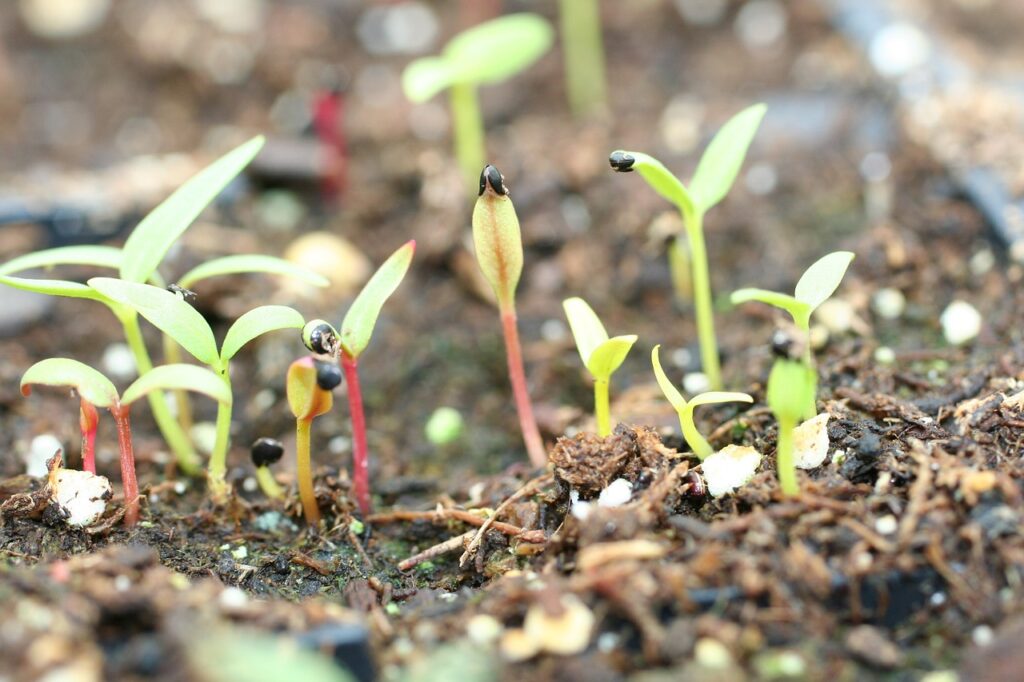
1. Choose the Right Variety
Celosia comes in three main types—plume, cockscomb, and wheat. If you want tall, feathery blooms, go for plume Celosia. If you prefer bold, velvety flowers, cockscomb is a great choice. Wheat Celosia, with its spike-like blooms, is perfect for natural-looking gardens.
2. Check the Seed Quality
Always buy high-quality Celosia seeds from a trusted seller. Look for fresh, non-GMO, or heirloom seeds with a high germination rate. This ensures strong and healthy plants.
3. Consider Your Climate
Celosia loves warm weather, so make sure to choose a variety suited for your local climate. If you live in a cooler area, start seeds indoors and transplant them when temperatures rise.
4. Pick Your Favorite Colors
Celosia blooms in shades of red, pink, yellow, orange, and purple. Choose colors that match your garden’s theme for a stunning display.
By selecting the best Celosia seeds, you can enjoy a garden full of bright, long-lasting flowers!
Factors to Consider: Climate, Soil, and Growing Space
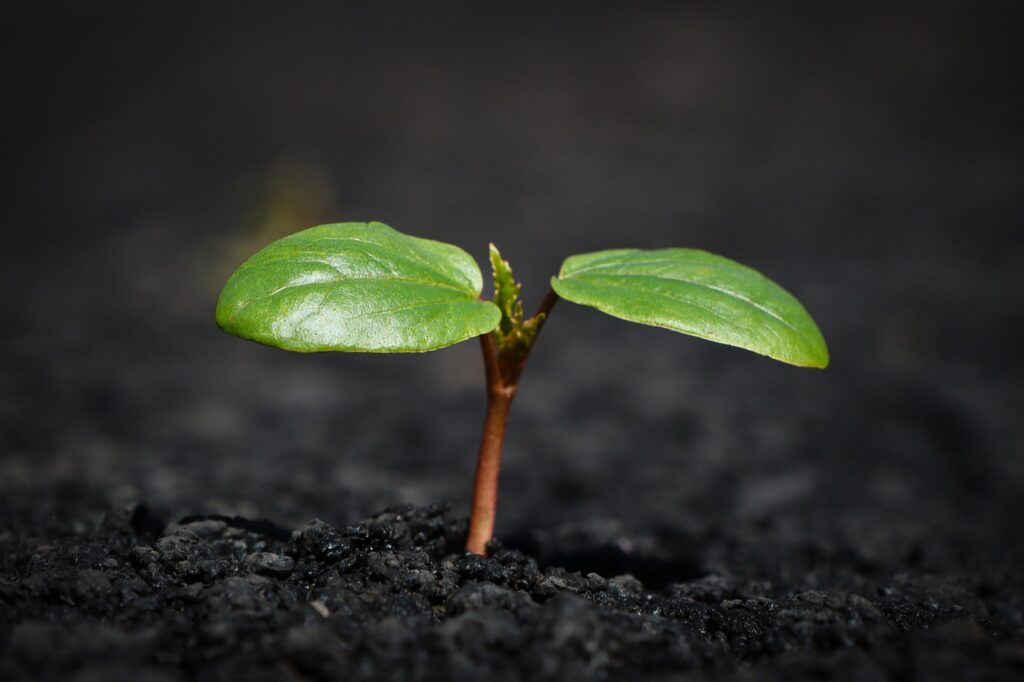
Before planting Celosia, it’s important to consider your climate, soil, and growing space to ensure healthy growth and vibrant blooms. These factors play a big role in how well your plants will thrive.
- Climate:- Celosia loves warm weather and grows best in temperatures between 70–85°F (21–29°C). It cannot tolerate frost, so if you live in a cooler region, start seeds indoors and transplant them outside after the last frost. In hot climates, Celosia thrives with plenty of sunlight, but providing some afternoon shade can help during extreme heat.
- Soil:- Well-draining soil is essential for Celosia. The plant doesn’t like soggy roots, so avoid heavy clay soil. For best results, use a light, sandy, or loamy soil with good drainage. Adding compost or organic matter will improve soil quality and help the plant grow strong. A soil pH between 6.0 and 7.0 is ideal.
- Growing Space:- Celosia comes in different sizes, from compact dwarf varieties to tall, bushy plants. If you have a small garden or plan to grow in containers, choose a dwarf variety. Taller types need more space and should be planted 8–12 inches apart for proper air circulation.
By considering these factors, you can create the perfect environment for healthy and beautiful Celosia plants!
Best Soil and Conditions for Germinating Celosia Seeds
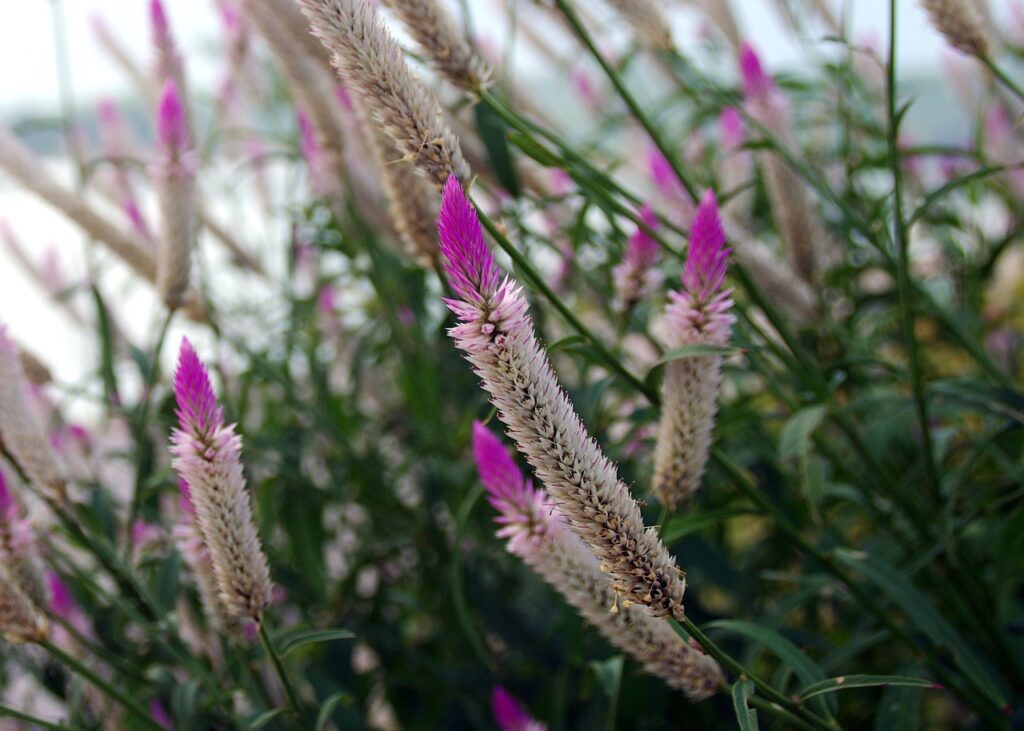
If you want to grow Celosia from seeds, it’s important to provide the right soil and conditions for successful germination. Celosia seeds are small and delicate, but with the right care, they sprout quickly and grow into healthy plants.
1. Choosing the Right Soil
Celosia seeds need light, well-draining soil to germinate properly. A loamy or sandy soil mix works best because it prevents excess moisture, which can cause seeds to rot. If using garden soil, mix in compost or peat moss to improve drainage and add nutrients. For containers, use a high-quality seed-starting mix for the best results.
2. Ideal Temperature and Light
Celosia seeds need warm temperatures to sprout. Keep the soil between 70–75°F (21–24°C) for the best germination rate. If you live in a cooler climate, use a heating mat to maintain warmth. Since Celosia seeds need light to germinate, press them gently onto the soil surface without covering them. Place the tray in a bright location or under grow lights.
3. Proper Moisture
Keep the soil evenly moist but not soggy. Use a spray bottle to mist the soil gently, preventing the seeds from getting washed away. Covering the tray with plastic wrap can help retain moisture until the seeds sprout.
With the right soil, warmth, and care, your Celosia seeds will germinate successfully and grow into strong, beautiful plants!
How to Prepare Soil for Planting Celosia Seeds

Preparing the soil properly is essential for successfully growing Celosia seeds. With the right soil conditions, your seeds will germinate faster and grow into strong, healthy plants. Here’s how to get your soil ready:
- Choose Well-Draining Soil
Celosia doesn’t like soggy soil, so make sure the soil drains well. If your garden soil is heavy or clay-like, mix in sand, compost, or peat moss to improve drainage. For container planting, use a light, well-aerated seed-starting mix. - Enrich the Soil with Nutrients
Celosia thrives in moderately fertile soil, so adding organic compost or aged manure can boost nutrients. Avoid using too much nitrogen-rich fertilizer, as it can cause more leaves to grow instead of flowers. - Adjust the pH Level
Celosia grows best in soil with a pH between 6.0 and 7.0. If your soil is too acidic, add some lime to balance it. If it’s too alkaline, mix in peat moss or sulfur. - Loosen the Soil
Before planting, loosen the soil with a garden fork or tiller to about 6 inches deep. This helps the roots grow easily and improves air circulation in the soil.
By following these simple steps, you’ll create the perfect soil conditions for Celosia seeds, ensuring healthy growth and beautiful blooms!
How to Care for Celosia Seedlings After Germination

Once your Celosia seedlings have sprouted, they need proper care to grow into strong, healthy plants. The right balance of water, light, and nutrients will help them develop well and prepare for transplanting.
1. Provide Enough Light
Celosia seedlings need plenty of sunlight to grow sturdy. Place them in a bright, sunny spot or under grow lights for at least 12–14 hours a day. Without enough light, they may become weak and leggy.
2. Water Carefully
Water your Celosia seedlings gently to keep the soil moist but not soggy. Overwatering can cause root rot, so always check if the top layer of soil feels dry before watering again. Use a spray bottle or watering can with a fine spout to avoid disturbing the delicate roots.
3. Thin Out Weak Seedlings
Once your seedlings have grown their first true leaves, thin them out by removing weaker ones. This allows the strongest seedlings to have more space and nutrients.
4. Harden Off Before Transplanting
Before moving your Celosia seedlings outdoors, gradually expose them to outside conditions over 7–10 days. Place them outside for a few hours each day, increasing the time slowly to help them adjust.
With these simple steps, your Celosia seedlings will grow healthy and strong, ready to bloom beautifully in your garden!
Pruning and Thinning Celosia Seedlings for Healthier Plants
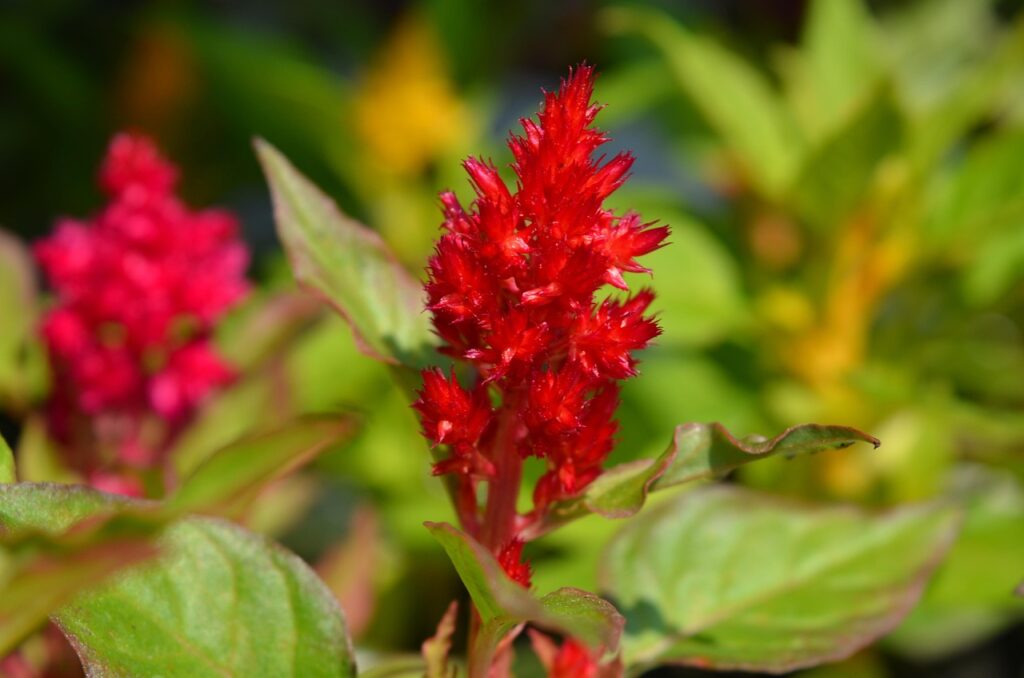
Pruning and thinning your Celosia seedlings is an important step to ensure they grow strong and produce plenty of flowers. If seedlings are overcrowded, they compete for nutrients, which can lead to weak and spindly plants. Here’s how to do it the right way.
- Why Thinning Is Important
Thinning helps remove weaker seedlings so that the strongest ones have enough space to grow. If Celosia seedlings are too close together, they won’t get enough light, air, or nutrients. This can make them prone to disease and poor growth. - When and How to Thin Seedlings
Once your Celosia seedlings have grown their first true leaves (not just the tiny starter leaves), it’s time to thin them out. Choose the healthiest seedlings and carefully remove the weaker ones. You can use small scissors to snip them at the base or gently pull them out if the soil is loose. Keep seedlings about 6–12 inches apart, depending on the variety. - Light Pruning for Stronger Growth
Once the seedlings are a few inches tall, pinch off the top leaves to encourage bushier growth. This helps the plant develop more branches, leading to fuller blooms.
By thinning and pruning your Celosia seedlings, you’ll give them the best chance to grow into strong, vibrant plants with beautiful flowers!
How Long Does It Take for Celosia Seedlings to Mature?
Celosia seedlings typically take around 3 to 4 months to fully mature, depending on the variety and growing conditions. From the moment you plant your Celosia seeds, you can expect to see them sprout within 7–14 days. After germination, the seedlings will start growing their first set of true leaves, and this is when you’ll need to care for them properly to ensure healthy growth.
As the seedlings grow, they will reach maturity in about 10–12 weeks, at which point they should start producing blooms. This can vary slightly depending on the type of Celosia you’re growing. For example, plume Celosia may mature a little faster than cockscomb Celosia, which typically takes a bit longer to develop its unique, brain-like flowers.
For best results, Celosia seedlings should be transplanted outdoors after the danger of frost has passed. Once they’re in the ground or containers, they will continue to grow, bloom, and reach their full height in about 2 to 3 months.
With proper care, including adequate sunlight, water, and nutrients, your Celosia seedlings will mature into healthy, vibrant plants, ready to brighten your garden with stunning blooms.
Signs Your Celosia Seedlings Are Ready for Transplanting
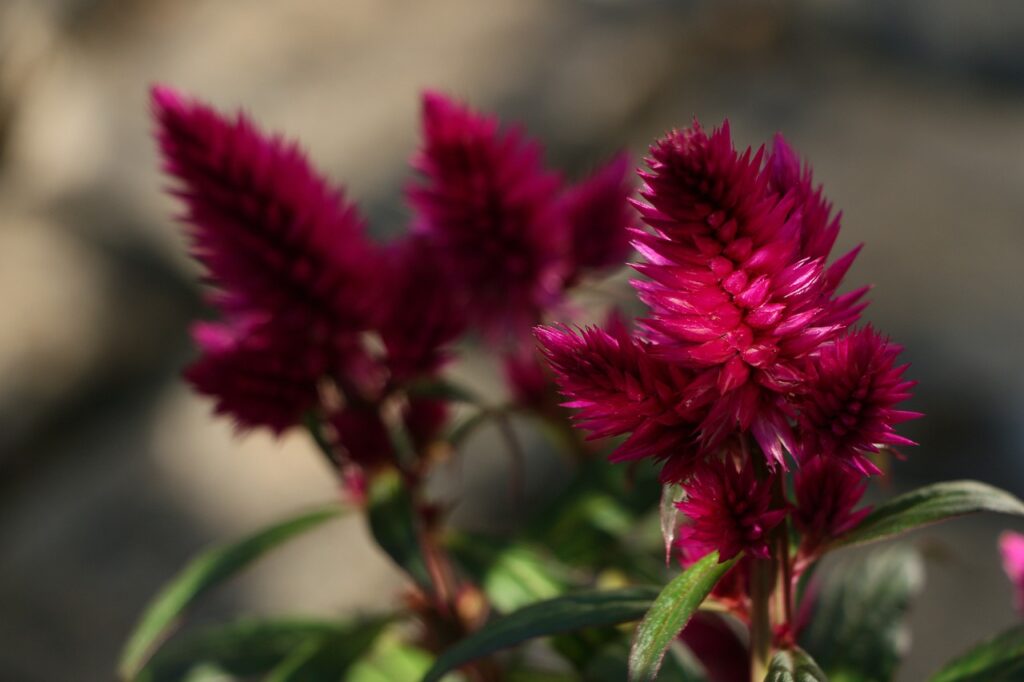
Transplanting Celosia seedlings into your garden is an exciting step in their growth process. But how do you know when they’re ready to make the move? Here are some signs to look out for:
- Strong, Healthy Growth
Your Celosia seedlings should have at least 2–3 sets of true leaves. The leaves should be healthy and green, with no signs of wilting or yellowing. Strong, healthy seedlings are a good indication that they’re ready to be transplanted. - Seedlings Are Tall Enough
Celosia seedlings should be at least 4–6 inches tall before transplanting. If they’re too small, they may struggle to adjust to outdoor conditions. Taller seedlings are more likely to survive the transition and thrive once planted in the ground. - Outdoor Temperatures Are Right
Celosia loves warm temperatures. Wait until the soil temperature is consistently above 60°F (15°C), and the risk of frost has passed. Celosia seedlings will struggle in cold conditions, so make sure your garden is warm enough before transplanting. - Hardening Off Process Is Complete
Before transplanting, your seedlings should be “hardened off.” This means gradually exposing them to outdoor conditions over 7–10 days to prevent shock.
Once your Celosia seedlings show these signs, it’s time to transplant them into your garden for a beautiful, vibrant display!
How to Grow Celosia from Seed ?
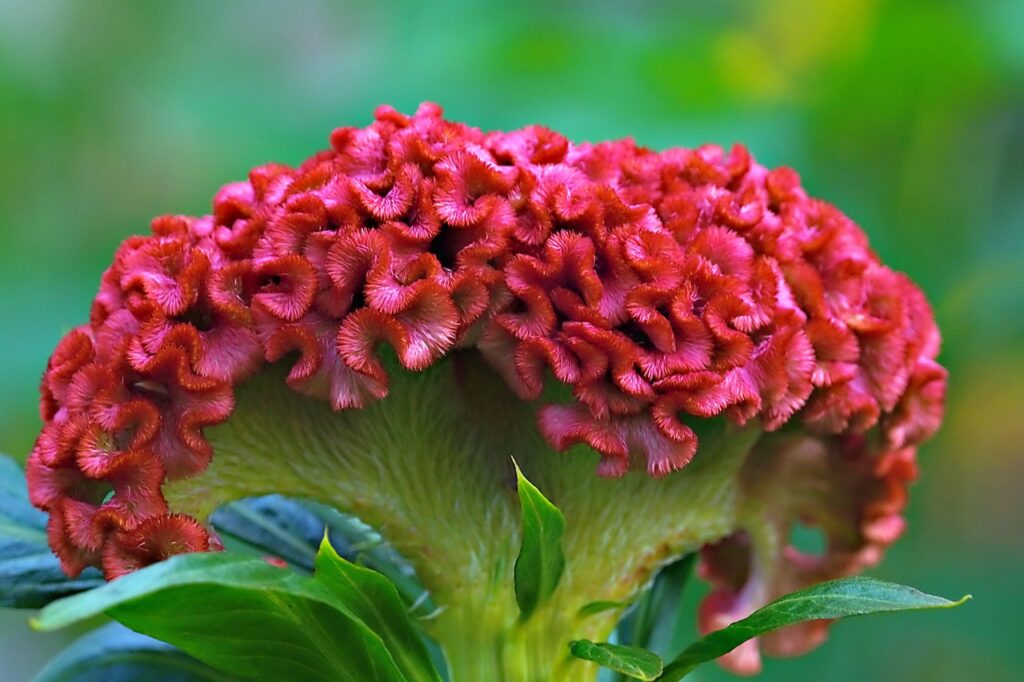
Growing Celosia from seed is a rewarding and simple process that allows you to enjoy beautiful, colorful blooms in your garden. Here’s a step-by-step guide to help you get started:
- Start Seeds Indoors
For the best results, start Celosia seeds indoors about 6–8 weeks before the last frost date in your area. Fill a seed tray or small containers with seed-starting mix and gently press the seeds into the surface of the soil. Celosia seeds need light to germinate, so avoid covering them with soil. - Maintain Ideal Conditions
Place your seed tray in a warm spot, ideally between 70–75°F (21–24°C). Keep the soil moist but not soggy. You can cover the tray with plastic wrap to retain moisture until the seeds sprout. The seeds should begin to germinate in 7–14 days. - Transplant When Ready
Once your Celosia seedlings have at least 2–3 sets of leaves and are 4–6 inches tall, they’re ready to be transplanted outdoors. Wait until the risk of frost has passed and the outdoor temperature is consistently above 60°F (15°C). - Prepare the Soil
Before transplanting, ensure the garden soil is well-draining and enriched with compost. Space your seedlings 6–12 inches apart to give them room to grow.
With these steps, you’ll be on your way to growing beautiful Celosia flowers from seed in no time!
Frequently Asked Questions
Celosia seeds usually germinate within 7–14 days in warm conditions.
Well-draining, light, sandy, or loamy soil with a pH of 6.0–7.0 is ideal.
Celosia thrives in full sun, requiring at least 6–8 hours of direct sunlight daily.
Water when the top inch of soil feels dry, keeping it moist but not soggy.
Transplant when seedlings are 4–6 inches tall and outdoor temperatures stay above 60°F (15°C).
Use well-draining soil and avoid overwatering to keep roots healthy.
Table of Contents
- How to Grow and Care for Celosia Plants?
- Types of Celosia: Choosing the Right Variety
- Watering and Feeding Celosia for Healthy Growth
- Best Watering Techniques to Avoid Root Rot
- Organic vs. Synthetic Fertilizers: Which is Better?
- How to Choose the Best Celosia Seeds for Your Garden ?
- Factors to Consider: Climate, Soil, and Growing Space
- Best Soil and Conditions for Germinating Celosia Seeds
- 1. Choosing the Right Soil
- 2. Ideal Temperature and Light
- 3. Proper Moisture
- How to Prepare Soil for Planting Celosia Seeds
- How to Care for Celosia Seedlings After Germination
- 1. Provide Enough Light
- 2. Water Carefully
- 3. Thin Out Weak Seedlings
- 4. Harden Off Before Transplanting
- Pruning and Thinning Celosia Seedlings for Healthier Plants
- How Long Does It Take for Celosia Seedlings to Mature?
- Signs Your Celosia Seedlings Are Ready for Transplanting
- How to Grow Celosia from Seed ?
- Mona Lavender Plant: Complete Growing Guide for Beginners
- Alocasia Stingray Plant Guide: Tips for Healthy Growth
- Pink Lilly Flower: Growing and Caring for Pink Lillies

